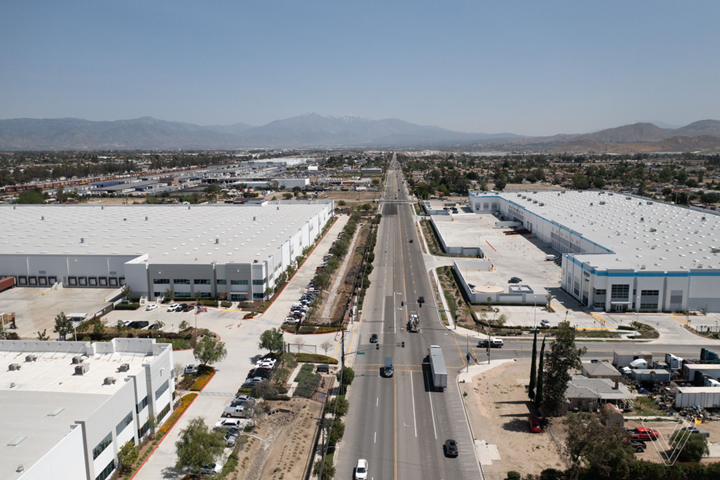Communities across the US are pushing for rules to clean up air pollution around warehouses.

The Environmental Protection Agency (EPA) just handed communities a powerful new way to hold nearby warehouses accountable for the pollution they create.
Until recently, air quality regulations largely overlooked tailpipe pollution choking neighborhoods near sprawling warehouses. Warehouses may not have smokestacks releasing pollutants that the EPA and local agencies typically regulate. But they do attract a steady stream of trucks. It’s a problem the warehouse wouldn’t necessarily have been held accountable for since old-school regulations focused on pollutants coming from the facility itself.
That changed with a landmark policy in Southern California called the Warehouse Indirect Source Rule (ISR) that requires large warehouses to take steps to limit those tailpipe emissions. The EPA just approved the ISR as part of the state’s air plan, which gives the agency and people living near warehouses the ability to sue if companies violate the rule. Making the rule federally enforceable could also help pave the way for similar rules in other regions where warehouses are expanding to meet demand for e-commerce.
“These indirect sources, such as warehouses, ports, and rail yards, all contribute to pollution and therefore must be addressed so our communities can breathe cleaner air,” EPA Pacific Southwest regional administrator Martha Guzman said in the EPA’s announcement yesterday.
A recent nationwide study linked truck traffic from warehouses to a rise in the smog-forming pollutant nitrogen dioxide. Neighborhoods downwind of warehouses, less than 5 miles (roughly 7 kilometers) away, saw a nearly 20 percent increase in nitrogen dioxide pollution on average compared to neighborhoods upwind of warehouses.
Clusters of warehouses with more loading docks and parking spaces can bring in more truck traffic. And neighborhoods with more residents of color are often the most affected. The study found that in places with the most warehouses, the proportion of Asian and Hispanic residents was close to 290 percent and 240 percent higher, respectively, than the median nationwide.
“Poor communities carry the burden of being exposed to increased pollution, not seeing high paying jobs, and having whole blocks of homes, schools, and small businesses swallowed up to place mega warehouses in our backyards,” Taylor Thomas, codirector of East Yard Communities for Environmental Justice, said in a press release. “This regulation marks an acknowledgement of the years of suffering borne by hundreds of thousands of people in our region, and a shift to having the logistics industry be responsible for the vast harms they create and leave behind.”
The Indirect Source Rule in Southern California was first adopted by the local air district in 2021 and will apply to warehouses with more than 100,000 square feet of indoor floor space in a single structure by next year. It uses a points-based system to try to keep pollution near warehouses in check. Warehouses need to earn a certain amount of points by electrifying vehicle fleets, installing EV chargers, and taking other pollution-cutting measures — or pay a fee. The rule has already pushed companies to acquire at least 815 new zero-emission trucks and install 172 truck charging stations, Sierra Club points out, citing data from the South Coast Air Quality Management District.
And yet, the overwhelming majority of the warehouses covered by the rule — 1,400 of 2,000 — were not in compliance last year, the Press-Telegram reports. The EPA’s decision to make the rule federally enforceable could force noncomplying warehouses to take swifter action. Advocates for communities near warehouses outside of California celebrated the decision as they try to establish similar indirect source rules.
“At least one in four New Yorkers live within half a mile of a mega e-commerce warehouse that generates hundreds or thousands of daily truck trips … we are inspired by California’s success in reducing harmful tailpipe emissions,” a statewide coalition of advocacy groups called ElectrifyNY said in an emailed statement. The coalition is calling on local leaders to pass the Clean Deliveries Act, which would establish an indirect source rule for warehouses in New York state. The bill was sent to the State Assembly after passing in the State Senate in June.
Source: The VERGE
September 12, 2024

